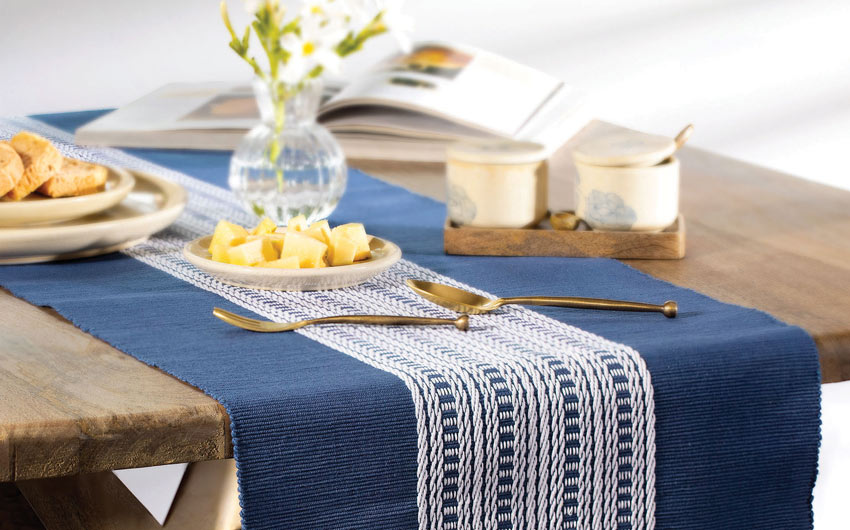How to Select the Perfect Table Runner for Your Dining Table
How to Select the Perfect Table Runner for Your Dining Table
Blog Article
Linen Material Advancements: Discovering Modern Trends and Creative Applications in Design and Textile Industry
From sustainable production methods to cutting-edge weaving modern technologies, the advancement of bed linen is improving the landscape of the textile market. As we dig into the realms of creative layout applications and the appearance of bed linen blends and hybrid fabrics, a new phase unravels in which bed linen's role in future textile technologies takes facility phase.
Lasting Practices in Linen Production
Lasting methods in linen production have become significantly critical in the fabric sector's initiatives to lessen environmental impact and advertise moral sourcing techniques. Linen, an all-natural fiber derived from the flax plant, offers a series of advantages such as breathability, longevity, and biodegradability. However, standard techniques of bed linen manufacturing can entail substantial water intake, pesticide usage, and energy-intensive processes.
To deal with these obstacles, lots of fabric suppliers are embracing lasting methods throughout the linen production process. This includes sourcing flax from natural ranches that avoid unsafe pesticides and chemicals, carrying out water-efficient retting strategies to extract fibers from the flax stalks, and using eco-friendly dyes and surfaces. Furthermore, some firms are investing in renewable resource resources to power their production facilities and decreasing waste with recycling and upcycling campaigns.
Technical Developments in Linen Weaving
With the expanding focus on lasting techniques in bed linen production, the textile market is currently observing a rise in technological developments particularly targeted at reinventing the art of bed linen weaving. These technologies are improving the way linen fabrics are produced, offering enhanced efficiency, quality, and imagination in weaving methods.
One of the essential technical improvements in bed linen weaving is the assimilation of digital looms. These innovative looms are outfitted with software that allows for complex and elaborate designs to be woven with precision. By digitizing the weaving process, manufacturers can achieve better uniformity and precision in their bed linen materials.
Moreover, improvements in thread spinning modern technology have actually made it possible for the production of finer and more sturdy bed linen yarns - table cloths. This leads to softer and smoother bed linen materials that retain their quality even after multiple usages and cleans
In addition, the growth of eco-friendly dyeing procedures and coatings for bed linen materials is acquiring grip. These lasting practices not just minimize the environmental effect but also accommodate the increasing consumer need for morally produced fabrics.
Creative Design Applications for Bed Linen
Ingenious imaginative methods are progressively forming the creative design applications for linen in the fabric sector. Bed linen's natural aesthetic charm and capability to mix with various other fabrics make it a favorite option for producing one-of-a-kind garments and accessories that cater to the ecologically aware customer.
Moreover, designers are experimenting with linen in home design, using its sturdy and breathable nature to craft stylish furnishings such as curtains, bedding, and upholstery. The texture and drape of linen bring a sense of elegance and comfort to interior spaces, adding a touch of beauty to contemporary homes.

Linen Blends and Hybrid Fabrics

Crossbreed textiles, on the various other hand, take the idea of blending a step further by incorporating Learn More Here additional components such as metal strings, recycled materials, or conductive fibers. These ingenious textiles not just broaden the design opportunities but additionally introduce useful elements like conductivity, antimicrobial properties, or boosted sturdiness. Crossbreed materials are significantly being utilized in numerous industries, consisting of fashion, interior decoration, and technical fabrics, where the demand for multifunctional materials gets on the rise.
Linen's Role in Future Textile Innovations

In the world of future fabric innovations, linen is expected to be a principal in the advancement of innovative useful fabrics. Designers and scientists are discovering means to enhance linen's fundamental high qualities with technical innovations, such as integrating wise fabrics, nanotechnology, and performance coatings. These best site innovations aim to elevate linen's performance qualities, making it ideal for a more comprehensive series of applications, from activewear to safety garments.
In addition, the mix of bed linen with other natural or synthetic fibers opens up countless opportunities for developing unique textiles with distinct homes and performances. By leveraging linen's attributes and exploring cutting-edge blends, the fabric market is poised to present amazing advancements that accommodate evolving customer requirements and sustainability demands.
Conclusion
To conclude, the expedition of lasting practices, technical improvements, innovative design applications, bed linen blends, and its function in future textile technologies highlight the constant evolution of bed linen material in the modern layout and textile sector. With a focus on innovation and creative thinking, the adaptability and environmentally friendly nature of bed linen make it an important material for suppliers and designers alike, leading the way for more advancements and innovations in the field of fabrics.
As we delve right into the realms of innovative design applications and the introduction of linen blends and hybrid textiles, a new phase unfolds in which linen's duty in future textile advancements takes center stage.
Discovering the fusion of bed linen with various other materials has actually led to the emergence of ingenious blends and crossbreed textiles in the contemporary fabric sector. Linen blends use an unique combination of the features of linen with those of various other fibers, resulting in textiles that possess improved buildings such as enhanced resilience, boosted draping, and reduced wrinkling.The evolution of bed linen blends and crossbreed fabrics has set the stage for Bed linen to play a pivotal function in driving future fabric innovations.In the realm of future fabric technologies, bed linen is expected to be a crucial gamer in the advancement of innovative functional fabrics.
Report this page